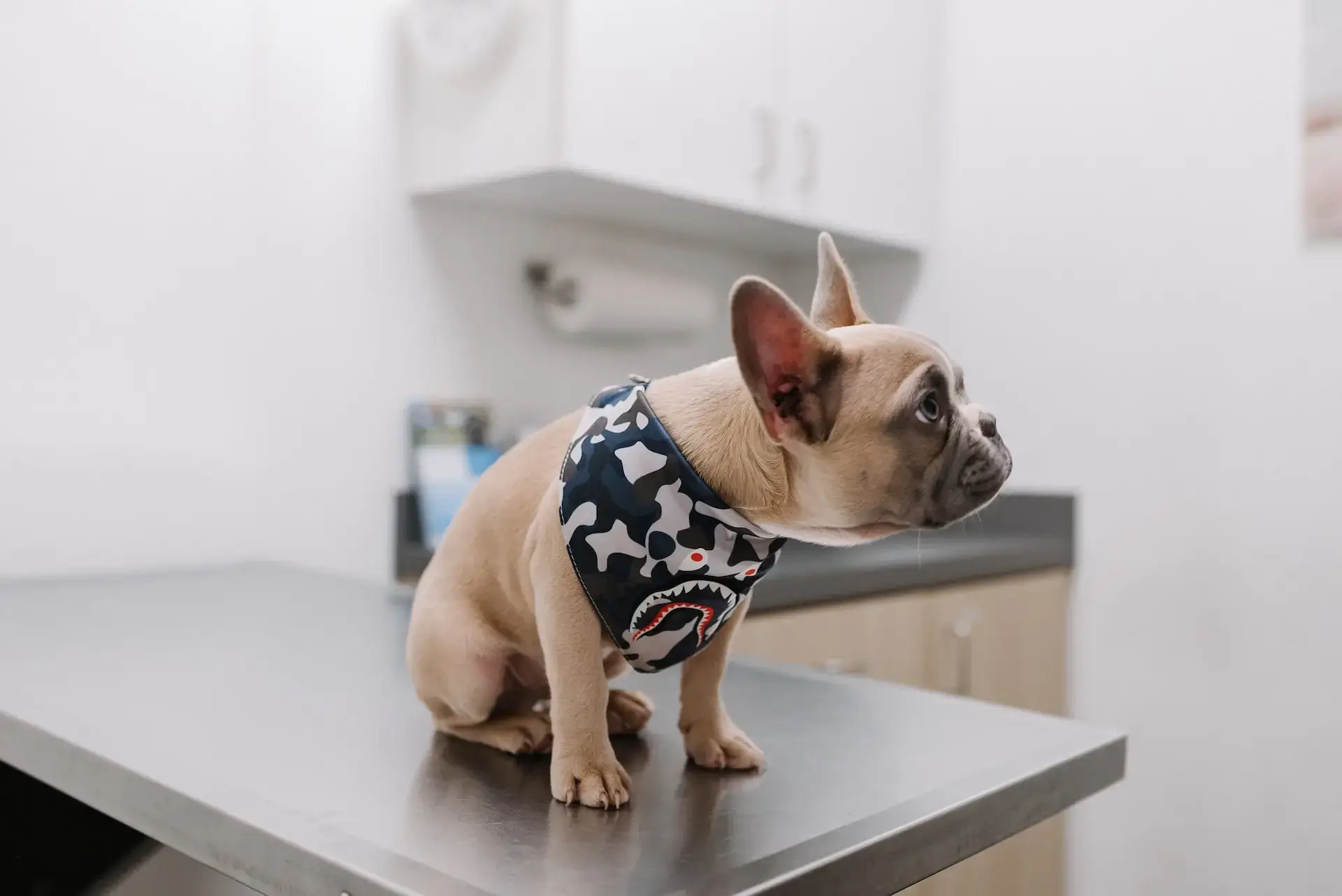It’s National Pet Sterilization Month
Love frequently defines February’s ambiance, particularly with Valentine’s Day on the horizon, embellishing stores with romantic symbols like flowers and chocolates. Yet, for pets, the emphasis shifts to prevention: it’s Prevent A Litter Month, Spay/Neuter Month, and Feline Fix By Five Month. These initiatives unite around a singular objective: reducing the incidence of unwanted litters among puppies and kittens. A local Lexington, VA veterinarian provides insights into this vital matter, imparting valuable perspectives.
What is the Optimal Age for a Kitten to be Spayed or Neutered?
It’s recommended to have Fluffy spayed before her first heat, typically around five months, as emphasized by the Feline Fix By Five Month campaign. Cats can become pregnant as early as four months, despite still being considered kittens. Although spaying can occur at eight weeks, many veterinarians prefer waiting longer. Consult your Lexington, VA veterinarian for guidance and adhere to their advice.
Is Spaying or Neutering Available for Adult Pets?
Absolutely! These procedures are generally safe, but seniors or pets with health concerns should consult a vet.
When is the Best Time to Spay or Neuter a Dog?
The optimal time to spay or neuter Fido depends on his size. The AKC recommends small dogs undergo surgery around six to nine months, while larger breeds might wait longer. Some giant dogs may not have surgery until 18 months. Consult your vet to determine the best timing, considering Fido’s size and health.
Is There a Difference in Male Pets’ Affection Post-Neutering?
Your fluffy buddy might already be the cuddliest critter around, but brace yourself for some serious snuggle sessions post-fixing! Getting rid of that mating instinct tends to make them more relaxed, which can really iron out any behavior quirks. Once they’re neutered or spayed, they won’t be as interested in marking their territory or finding a mate, so they’ll be all about playtime, cuddles, and soaking up those belly rubs. It’s like they’re saying, “Who needs romance when there are squeaky toys and warm laps?”
What Are the Health Benefits Associated with Getting My Pet Fixed?
Even as we prioritize curbing animal overpopulation, there are significant benefits for your pet as well.
These are several key ones to note:
Lowered Cancer Risk– The decision to spay or neuter your pet results in a significant decrease in the likelihood of certain cancers. Male pets, especially, experience a substantial reduction in the risk of testicular cancer, while females benefit from a lowered risk of ovarian, uterine, and mammary gland tumors.
Greater Lifespan– Were you informed that spayed or neutered pets frequently live longer lives? For females, the risks associated with pregnancy and childbirth complications are eradicated. The reduced cancer risk mentioned earlier also contributes to their overall health. Additionally, fixed pets are less likely to roam.
Limit Unwanted Behaviors– Heat cycles and hormonal urges can result in messy side effects. Intact male pets are much more likely to spray and are also more aggressive, making them more prone to destructive behaviors. Spaying or neutering can effectively address these issues, creating a cleaner, calmer living environment for both pets and their owners.
Will Having My Pet Fixed Genuinely Help Curb Overpopulation?
While getting your furry buddy spayed or neutered won’t instantly resolve the problem, it’s certainly a positive step. It’s a combined effort. Every pet plays a role!
Let’s consider Fluffy and Fido’s reproductive statistics. The proven data set is pretty mind-blowing.
What Is the Rate of Dog Reproduction?
Canines typically produce about two litters annually, each with an average size of six to ten. In just six years, a single pair of dogs could potentially have as many as 67,000 descendants!
This number is really just a generalization. Some dogs far exceed this number. Tia, a Neapolitan Mastiff, holds the record with an incredible 24 puppies in a single litter in 2004. Her incredible feat actually earned her a place in the Guinness Book of World Records. In a recent event, an Australian dog named Honey broke the country’s record. After laboring for three days, Honey gave birth to 22 puppies.
What Is the Rate of Cat Reproduction?
Fluffy, like other felines, can produce three litters per year, with an average of 4-6 kittens in each litter. This implies that in merely eight years, a pair of cats could potentially have as many as 2,072,514 descendants!
Some of our feline companions could rival Honey and Tia. In 1970, a Burmese/Siamese cat set the record for the largest litter with 19 kittens, although four were stillborn. Even the 15 surviving kittens would have been noteworthy. However, Dusty, a Texas cat, holds the lifetime record with an astonishing 420 kittens.
Although an overflow of puppies and kittens may seem adorable, these figures reflect more grim statistics. Every year, approximately 7.6 million animals enter American shelters. Tragically, about 1.2 million dogs and 1.4 million cats are euthanized.
Moreover, there are millions of stray pets out there, struggling to fend for themselves. Street existence is brutal for these animals, with many enduring brief, harsh lives. Preventing your pet from contributing to this population is a small deed with significant implications for the welfare of all animals.
How Can I Ensure My Pet’s Successful Recuperation After Spay/Neuter Surgery?
Your vet clinic will provide detailed post-surgery instructions, often on a care sheet. It’s vital to adhere strictly to these guidelines to be sure your pet heals properly.
Typically, it’s recommended to offer your furry pal a tranquil, cozy space for recovery. (If you’ve been thinking about a new bed, now is a good time.) Keep other pets separated initially, allowing your pet peaceful rest. Regularly monitor the surgical area to ensure proper healing.
Pets might try to scratch or nibble stitches, leading your vet to suggest an inflatable collar or “Cone of Shame” to prevent damage. Your vet clinic will provide information on this.
Boys typically heal quicker from the procedure than girls. Most males will be over the healing ‘hump’ within a few days, while females may not be fully healed for a few weeks.
Remember to watch for any indications of infection or complications. These could include:
- Lethargy
- Foul Odor
- Swelling
- Diarrhea
- Torn Stitches
- Pus
- Fever
- Redness
- Vomiting
- Bleeding
Should you observe anything amiss, contact your veterinary clinic without delay.
How Much Should I Expect to Pay for Spay/Neuter Surgery?
Costs vary depending on location. Despite the potential initial cost associated with spaying or neutering your pet, it is a prudent investment in the long term. The potential expenses of managing a litter of puppies or kittens, as well as addressing health issues related to their reproductive organs, could greatly exceed the initial procedure’s cost.
A Bonus Reason to Get Your Cat Fixed
When discussing the necessity of spaying or neutering pets, it’s essential to consider one of the less talked-about benefits of having Fluffy fixed: the end of her nightly vocal performances. While Fluffy is undoubtedly a cherished companion, her singing abilities are less than impressive. During heat, cats emit sounds that could be interpreted as singing in an attempt to attract mates. Unfortunately, to human ears, it’s more akin to enduring a mild form of auditory discomfort. While this “singing” may be alluring to other felines, for us humans, it’s more of a nuisance. This alone may justify considering spaying or neutering your pet!
Are you planning to schedule spay/neuter surgery for your pet? Have queries about getting your furry pal fixed? Contact us at The Wellpet Group, your Lexington, VA pet clinic, for all your pet’s veterinary requirements.




!Social Icons